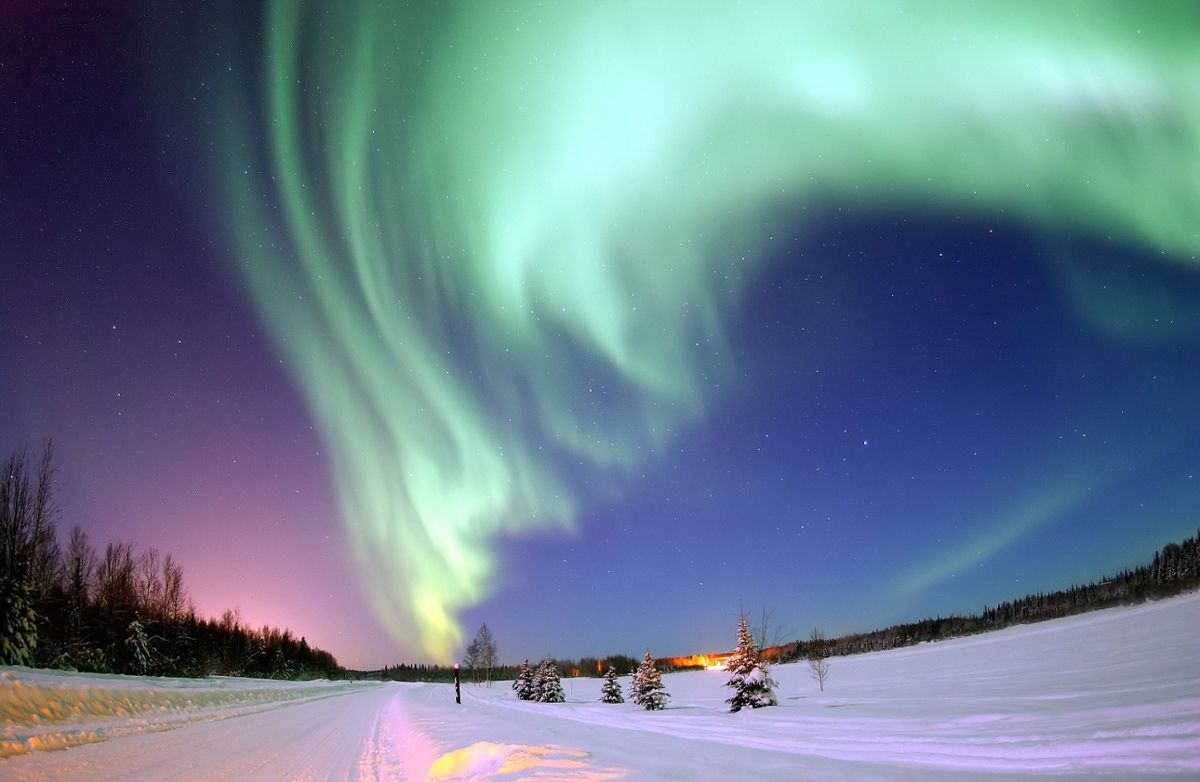It’s a bird; it’s a plane; it’s—a space hurricane? That’s what a team of scientists are calling an auroral phenomenon they observed in the Earth’s upper atmosphere. The scientists found the phenomenon while looking through satellite data from 2014 and then making a 3D model of what the data showed. According to their research, one night, far above the north magnetic pole, there was an aurora packed into a vortex shape with a 1000-kilometer-wide diameter. It had multiple arms, spun counterclockwise around a calm center, and lasted about 8 hours. Though it looked and acted like a hurricane, this so-called space hurricane wasn’t the same as the hurricanes we see in oceans on Earth’s surface. So, what exactly was this thing?
Auroras—also known as the northern and southern lights—occur in a ring called the auroral oval, whose size changes depending on the interactions between Earth’s magnetic field, solar wind, and the sun’s magnetic field. The space hurricane occurred when the aural oval was very small. Plasma that would normally cause dim, indistinct auroras was concentrated into a tight spot, making the lights glow brighter, and solar winds caused the concentrated mass to spin.
The hurricane metaphor is useful for picturing what this phenomenon looked like. But unlike a real hurricane, space hurricanes likely don’t pose any danger to life down on Earth. That’s great news because scientists have reason to believe they’re fairly common. If you hear a scientist predict a space hurricane some day in the future, don’t be alarmed: a regular old rainstorm will probably have a more noticeable effect on your day.










